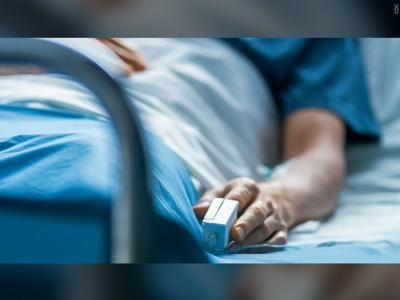SUSSEX COUNTY, Del. - A recent safety assessment of Delaware hospitals reveals a noteworthy trend: not a single hospital in the state received an A. The report, conducted by The Leapfrog Group, looks at safety and other performance metrics to bring attention to specific areas where local healthcare facilities face challenges. This comes against the backdrop of ongoing concerns about general access to healthcare in southern Delaware.
SURVEY OVERVIEW
The Leapfrog Group, a national nonprofit focused on transparency in the quality and safety of American healthcare systems, collects and reports on hospital performance with the goal of providing information consumers can use to make informed decisions about their care.
According to Leapfrog, 440,000 people die every year because of hospital safety problems. It says preventable errors and infections are the third leading cause of death in the United States behind heart disease and cancer.
Leapfrog issues hospital safety grades twice a year., in which it assigns a letter grade to hospitals across the country based on over 30 national performance measures reflecting errors, accidents, injuries, infections and the systems in place to prevent them. The group says these rates show how safe hospitals are for patients by looking at questions like how successful hospitals are at preventing patient infections, how supportive their healthcare teams are and if they include the patient and if they have procedures in place to prevent errors like leaving objects in a patient's body during surgery.
BEEBE HEALTHCARE - C
Beebe Healthcare on Savannah Road in Lewes received a C, the hospital's second C in recent years. Scores have been declining, with Beebe's last A given in the spring of 2020.
The hospital was above average when it came to effective leadership that makes patient safety a priority, according to Leapfrog. Staff were responsive when a patient was in need and communication levels are reported as good when it comes to discussing medications and side effects with patients, nurse communication with patients and information relating to discharge and post-hospital care instructions.
Though it scored well when it came to preventing accidental tears in surgery and surgical wounds splitting open, Beebe ranked below average when it came to sepsis infection after surgery. Sepsis is the body's extreme reaction to an infection and requires quick treatment. It was also below average when it came to preventing death from treatable serious complications, like catching pneumonia or having a heart attack while in the hospital, as well as handling serious breathing problems in which patient lungs can't take in enough oxygen after surgery.
Notably, Beebe received a low score in handwashing. With the top hospitals receiving a score of 100, the average hospital in the survey received a 77 and Beebe received a 40.
Beebe did not respond for a request for comment.
BAYHEALTH SUSSEX CAMPUS - B
Bayhealth's Sussex Campus in Milford was the highest-ranking hospital in Delaware, receiving a B. Since 2020, Bayhealth has consistently received A's and B's in the Leapfrog Hospital Safety Grade.
The hospital sat around the national average for most survey measures. It did very well when it came to preventing infections in patient blood, having effective leadership to help prevent errors and having specially trained doctors care for ICU patients. Bayhealth also scored well in different areas relating to medication, including cross checking that the correct medication is going to the right patient and ordering medications through a computer, which could alert a doctor if she tries to order a medication that could cause accidental harm.
Bayhealth was below average when it came to certain measures regarding preventing problems with surgery, like accidental cuts and tears or surgical wounds opening. It was also slightly below average in preventing bed sores and dangerous blood clots.
Bayhealth could not be reached for comment.
TIDALHEALTH NANTICOKE -C
TidalHealth Nanticoke in Seaford received a C in Leapfrog's safety score system. Similar to Beebe, Nanticoke's scores have been steadily falling. Leapfrog ratings in 2020 were an A's and in 2021 were B's. Nanticoke received a C in spring of 2022 and that score has remained since.
"The C Leapfrog score, while on par with other Delaware hospitals, is not reflective of the overall commitment to patient safety in our Seaford hospital," said Roger Follebout, Jr., director of strategic communications at TidalHealth. "TidalHealth continues to use the measure data to examine processes and make improvements where needed. Our dedication to providing the highest quality care and safety is unwavering."
In summary, Nanticoke performed above average in areas like timely responses from hospital staff and safe medication administration. It also sat towards the top of the pack when it came to preventing harmful events following a surgery, procedure or childbirth. Scores were positive relating to the prevention of dangerous blood clots and collapsed lungs, too. Additionally, its score relating to infections in patient blood was the same as the best score reported, and the hospital has achieved improvements in infection control measures.
On the other end, one specific area of note in the Leapfrog Hospital Safety Grade is nursing and bedside care for patients. According to the hospital safety grade, better staffing practices have a meaningful impact on the quality of patient care. When more nurses and assistive personnel are available, patients are more likely to have better experiences and improved health outcomes. Nanticoke received a 15 in this area, which was the lowest recorded score among hospitals surveyed. The average score was a 71.
"We were delayed in providing certain data on nursing and bedside care and were penalized with a low grade by not responding to a voluntary survey question," Follebout said. "When included, it significantly improves our score in that portion of the review."
Nanticoke also scored low when it came to dangerous objects being left in a patient's body during surgery. Leapfrog said this doesn't happen often and is most often a surgical sponge. Follebout said there was an unanticipated surgical event over three years ago that was immediately identified and remedied and has not reoccurred since. The patient, according to Follebout, experienced a successful outcome and recovery.
TIDALHEALTH PENINSULA REGIONAL - A
Though Delaware did not have any hospitals that received an A from Leapfrog, it is important to note that nearby TidalHealth Peninsula Regional in Salisbury did. It was one of 13 Maryland hospitals to earn an A in the fall report, a grade it has held since the spring.
"Safety is foremost for all healthcare providers. Not only achieving but also maintaining an A rating only happens because a team is dedicated to a multidisciplinary approach involving both clinical and non-clinical partners focused on improving processes to enhance exceptional care and safety," said Steve Leonard, president and CEO of TidalHealth. "In addition to our providers and nurses, there are always key contributors like the pharmacy staff who provided input and leadership into reducing infections and our information technology team that is always crucial to our successes."
DELAWARE HEALTHCARE ASSOCIATION CONCERNED OVER METHODOLOGY
The Delaware Healthcare Association, which represents healthcare companies throughout the state including those mentioned above, said that Delaware hospitals are committed to providing safe, high-quality care to all who enter their doors. It noted that Delaware recently ranked third in the nation for hospital quality in a U.S. News and World Report. In response to member hospitals' Leapfrog grades, the association expressed reservations with the survey's methodology.
Similar to Follebout, Brian Frazee, president and CEO of the Delaware Healthcare Association, said hospitals are penalized with low grades on some measures if they do not respond to a voluntary survey.
"Leapfrog uses different quality measures and performance data than other organizations, which is why our hospitals may perform better on other report cards compared to the Leapfrog grade system," said Frazee. "It's also important to interpret the grades in context, as some measures use data that is more than two years old and may not reflect recent performance improvement efforts."
Frazee noted that fall 2023 Leapfrog safety scores continue to reflect data impacted by the COVID-19 pandemic. He said that other quality reporting entities, like the Centers for Medicare and Medicaid Services, do not impose penalties on some quality programs for fiscal year 2023 because doing so would distort hospital performance due to the pandemic's effects.
"Leapfrog chose to continue its comparisons of hospital performance based on distorted data," Frazee said.
INSIGHT INTO LEAPFROG'S SCORING SYSTEM
According to Missy Danforth, vice president of Leapfrog's healthcare ratings, data for the hospital safety grades comes primarily from the Leapfrog hospital survey and from the Centers for Medicare and Medicaid Services.
"We use the most current data available when calculating a hospital's grade twice a year," Danforth said. "In some cases where a hospital's information is not available for a certain measure, Leapfrog uses a supplemental data source. In cases where a hospital's information is not available from any data source, Leapfrog has outlined a methodology for dealing with the missing data."
That methodology includes adjusting the scoring denominator. For example, the Leapfrog safety grade includes up to 22 measures of data, according to Danforth. If a hospital is missing data for two measures, its grade would then be calculated over 20 measures instead of 22, meaning each included measure weighs more. Danforth said hospitals missing more than six process measures, more than five outcome measures or PSI90 are not graded.
As for the timeliness of gathered data, Danforth explained that all hospitals in the United States are invited to submit a Leapfrog hospital survey every year. A formal letter is physically mailed to hospital CEOs every year. Hospitals then voluntarily submit data via Leapfrog's online survey tool, though hospital safety grades are assigned to every general acute care hospital in the country regardless of whether or not they report to the Leapfrog hospital survey.
The survey opens online on April 1 and the final deadline is Nov. 30. Hospitals may submit any time during that period, however, they must submit by Aug. 31 to have survey results included in the fall grade. Those that miss the Aug. 31 deadline can still submit until Nov. 30 and that information will be included in the spring grade.
Each month, Leapfrog said it conducts data verification of the responses submitted and that some facilities are randomly selected to submit further documentation for qualitative measures.
Leapfrog ratings can be found online at ratings.leapfroggroup.org. Hospital safety grades for facilities around the country are available to the public, as well, at hospitalsafetygrade.org.



